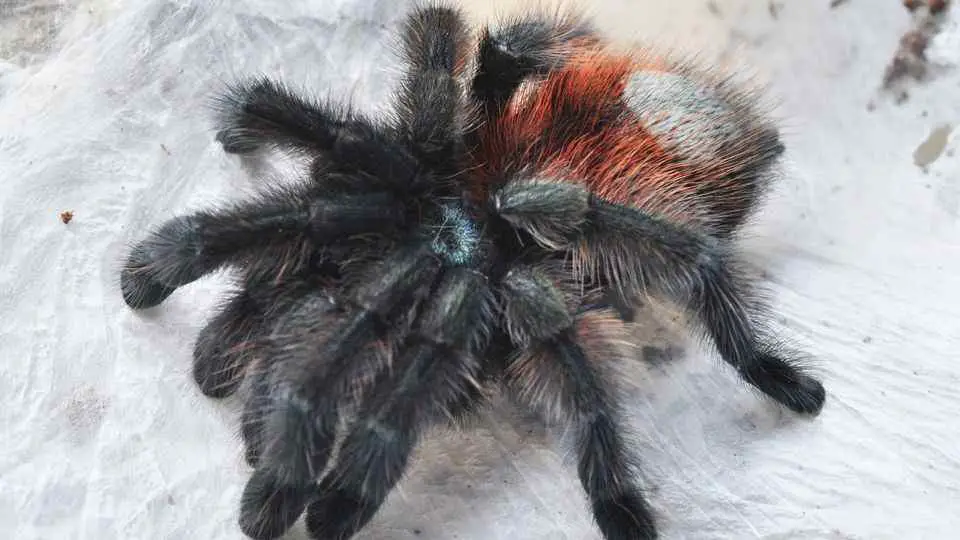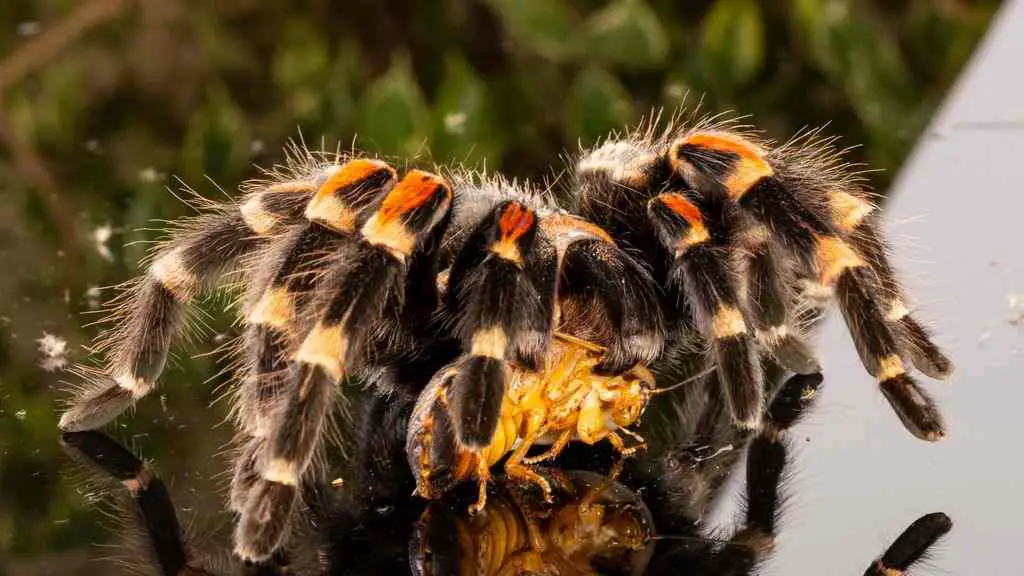Tarantulas are unique and fierce-looking creatures that can be kept as pets. You may wonder if they really make good pets, and whether they are the right choice for you.
Tarantulas are good for busy people looking for unique and less intimate pets with low maintenance effort and costs, and require small space. Although they look scary, many tarantulas are docile, and rarely harm their owners. Depending on your commitment, you can get species of varying lifespan.
Making a decision to keep a tarantula is not easy. I’ve listed the advantages and disadvantages of keeping tarantulas below to help you make a decision. Do remember to also check out my list of beginner-friendly tarantulas to kick start your hobby.
Why Should You Keep Tarantulas
Tarantulas are Special
If you want a unique pet, get a tarantula. They are so different from the dull cats, dogs, and even ponies. Many didn’t even know that tarantulas can be kept as pets. It is a WOW factor for many “commoners”.
There are more than 1000 species of tarantulas. Each has its own coloration and behaviors, which gives you a different experience keeping them.
If you want a blue pet for example, there is the Greenbottle blue tarantula. If you want red tarantula, get Mexican fire leg, Mexican flame led, or Mexican red knee. Purple? Sure, get the purple tree tarantula.

Not only the tarantulas have unique colorations, the colorations change as they grow. For instance, Caribena versicolor is blue when it is young. As it grows, it turns reddish-purple and has pink toes. Fascinating and exciting isn’t it?
On top of that, there are arboreal and terrestrial tarantulas. Both require different terrarium setup. You can design different stunning terraria for your tarantulas, which is really satisfying.
No String Attached Relationship
Tarantulas do not require tender-loving care from their owners. If you want a pet that you don’t have to spend too much time playing with, tarantula is one of your best options.
When my boy was younger, he loved cats so much. We adopted a small kitten. But we didn’t have time for the kitten. We leave home for work and (full day) school early in the morning and come back at night. After dinner and chores, it’s time to sleep. We only have time to play with the kitten on the weekend if we don’t visit friends or go shopping. The kitten was so lonely, and we had to give her away.
You won’t face this issue with tarantulas. They don’t feel lonely if you don’t have time for them. In fact, you better leave your tarantula alone instead of constantly disturbing it.
Minimum Maintenance
Tarantula is truly the best pet for people with a busy life, because it is super easy to take care of!
Unlike companion pets, such as dogs and cats, you don’t have to feed tarantula daily. A typical feeding regime for tarantulas is twice a week to weekly. Only cursory cleaning is required to remove food debris after feeding.
Similarly, you don’t have to give it water daily. A filled water dish can last a week, depending on how big it is.
The only major work you need is cleaning the housing once every few months. Refer to my tarantula care guide, and you will know how easy it is to take care of the tarantula.
Low Cost
Tarantulas are relatively affordable compared to other conventional pets. Upfront, you only need to pay for the tarantula and the housing.
In general, a juvenile, unsexed tarantula of 0.5-1” costs $10-$100. Those between 1-2” cost $70-$200, and anything above 2” can cost up to $700, depending on the species, breeders, and local rarity. Female tarantulas are more expensive than males because they live longer.
A full housing set up costs ~$100. If you don’t have the budget for that, any used plastic container which is big-enough and has a proper lid will do the job. Lighting and heat mat are good-to-have addons that cost you around $40.
As for running costs, you just need to pay for the crickets or roaches that you use to feed the tarantulas. They are cheap. You can even maintain your own colony of feeder insects easily.
Those are all the costs for keeping a tarantula. You don’t have to pay for vaccinations or vets (not that you can).
Small Space Requirement

If you are staying in an apartment or renting a room, tarantulas are a good choice as pets because they occupy a very small space.
Many tarantulas are palm-sized, measuring around 4-5” in leg span. There are bigger tarantulas at about 11”. Regardless of their size, tarantulas don’t occupy a lot of space.
As a general rule of thumb, the width and length of the housing should be about 2-3 times the leg span of your tarantula. Meanwhile, the height of the housing can vary depending on the species of tarantula that you are keeping, but need not be more than 3 times the leg span of your tarantula.
In general, a 7-9 gallon tank is more than enough to house a 5” tarantula. And that’s it! Unlike companion pets, your tarantula won’t roam in your house, unless it escapes…
Flexible Commitment
Depending on species, tarantulas have different lifespans. If you are scared that you will regret having a tarantula, choose a male tarantula. A male Greenbottle blue or pinktoe tarantula typically lives for 3-4 years. If that’s not short enough, get an adult instead of a juvenile.
If you want a pet that can live for many years, tarantulas outlive many pets. It is not uncommon to have female tarantula of certain species living for 20-30 years. For instance, a female Brazilian black has a lifespan of 25-30 years!
Docile and Relatively Harmless
Despite its gruesome appearance, many tarantulas are quite docile to humans. Probably because we are way larger in size than them.
Sure, tarantulas have venomous fangs, but they rarely bite. Even if they bite, it feels like a bee sting. The venom may cause your wound to swell, but generally, it recovers in a few days.
In general, New World tarantulas are not as venomous as their Old World counterparts. That’s why beginners should always keep New World tarantulas.
Similarly, many New World Tarantulas don’t normally shoot their urticating hairs on you, unless they feel threatened. As long as you don’t handle them, it is safe!
Pleasing to Watch

It is pleasing to observe a tarantula, especially if you have set up a nice terrarium to house it.
Watching how the tarantula hunt is also another experience that you don’t normally encounter. Some may say it is cruel and barbaric, but that is nature, isn’t it?
On top of that, the tarantula housing itself can become a unique decoration of your house!
Disadvantages of Keeping Tarantulas as Pets
They are Not Companions
Tarantulas will never grow affection or bond with you, at least that’s what we know.
If you are looking for a pet that you can play with, build relationships with, or even cuddle, tarantula is definitely not for you!
They Bite or Eject Urticating Hairs
Anything with teeth can bite. Tarantulas have sharp fangs, so they do bite. And the worst thing is, their bites are venomous. Old World tarantulas are usually more venomous than their New World counterparts.
You should also worry about the urticating hairs of the New World tarantulas. When they feel threatened, they kick their urticating hairs on their opisthosoma toward you, causing irritation on your skin. It can be dangerous if the urticating hairs hit your eyes.
Feeding may Seem Cruel
Tarantulas are carnivores. You need to feed them with live insects, such as roaches or crickets. Some hobbyists even feed their tarantulas with mice. This may seem cruel for some people, but that’s what tarantulas eat in nature.
Are Tarantulas Good Pets for Children?
Tarantulas are good pets for children, because caring is easy. Keeping tarantulas can nurture responsibility in the children. Many children aren’t afraid of tarantulas, as they haven’t been exposed to spider-based horror fictions. They just need some help to learn how to deal with tarantulas safely.


